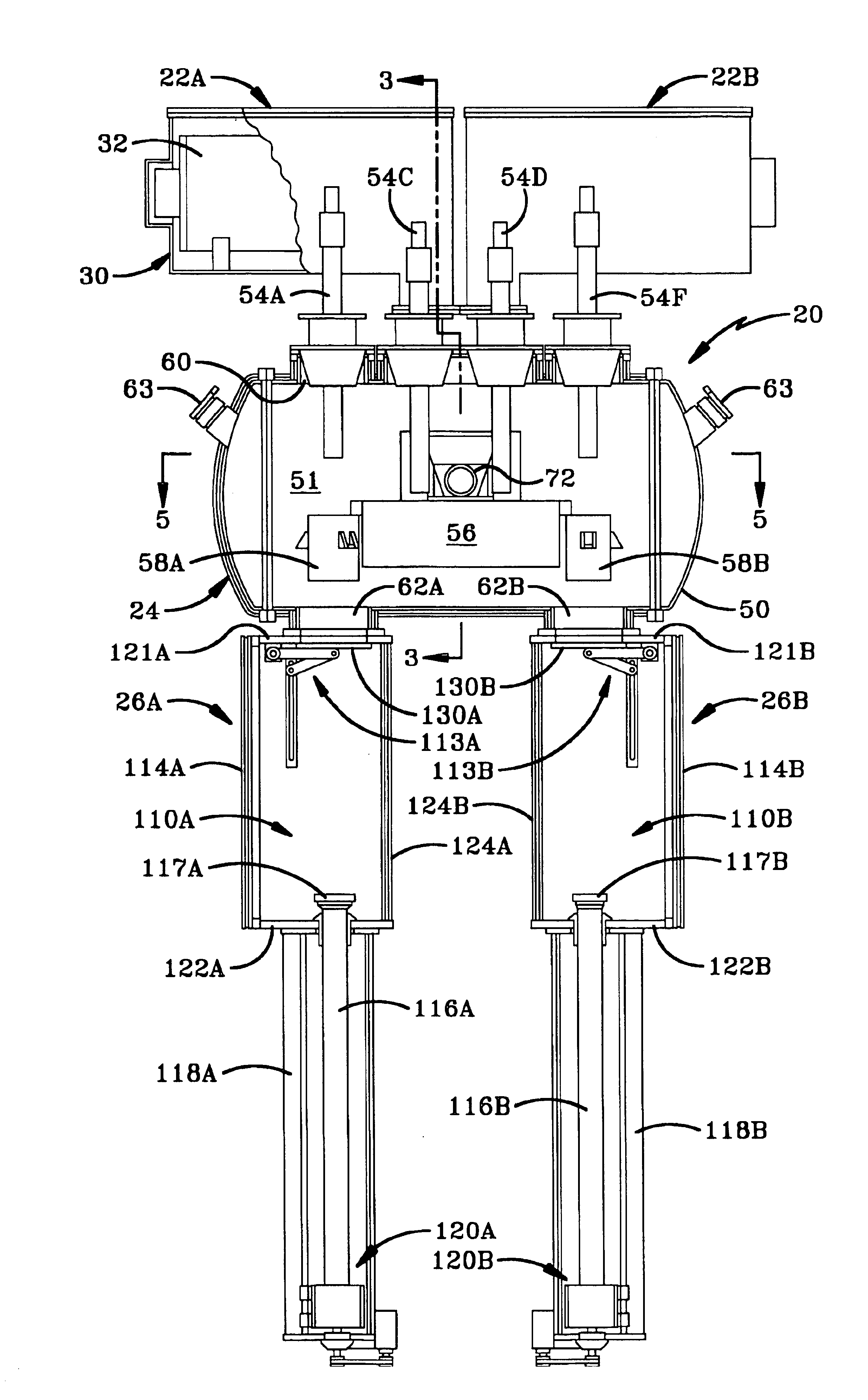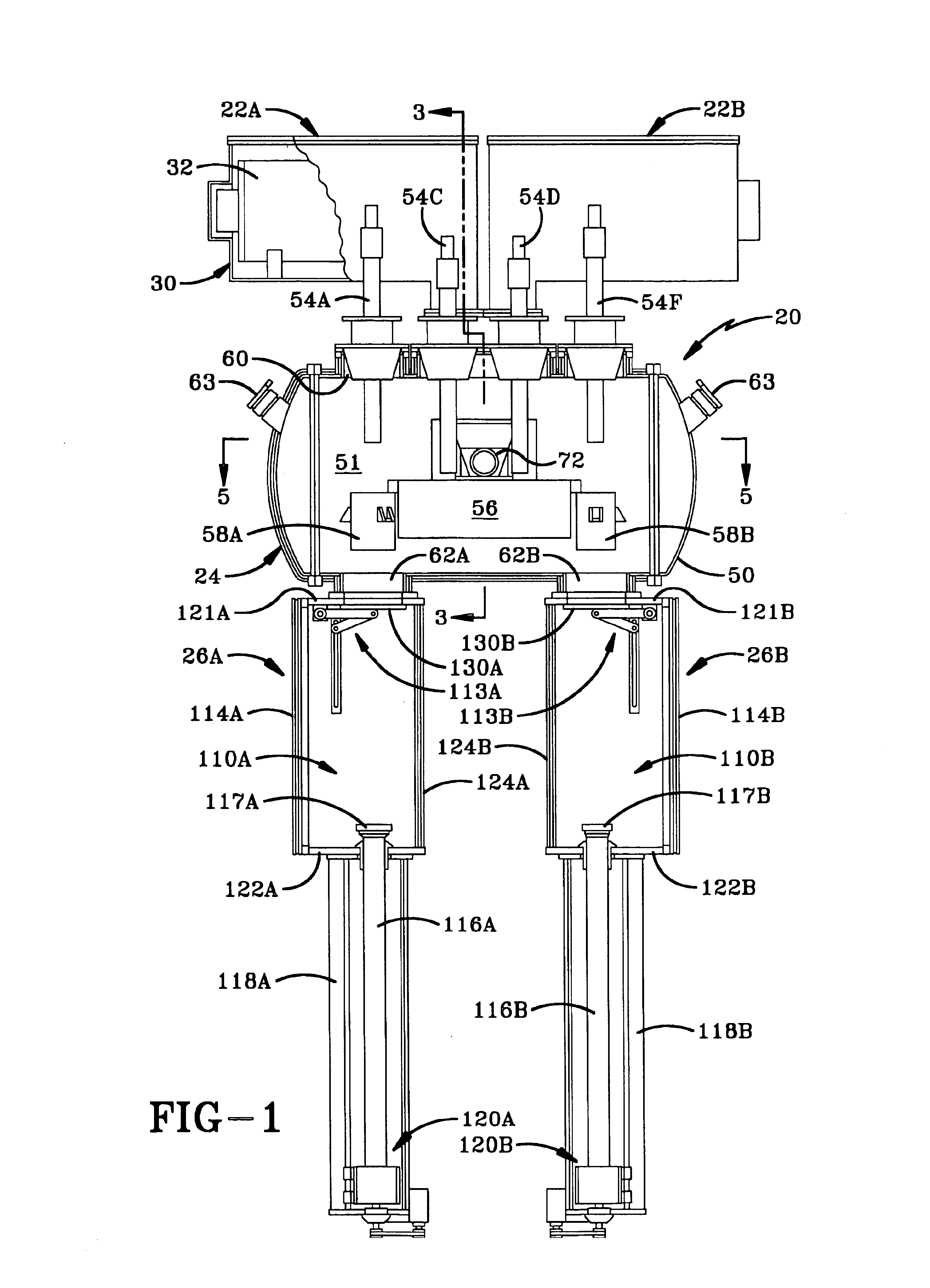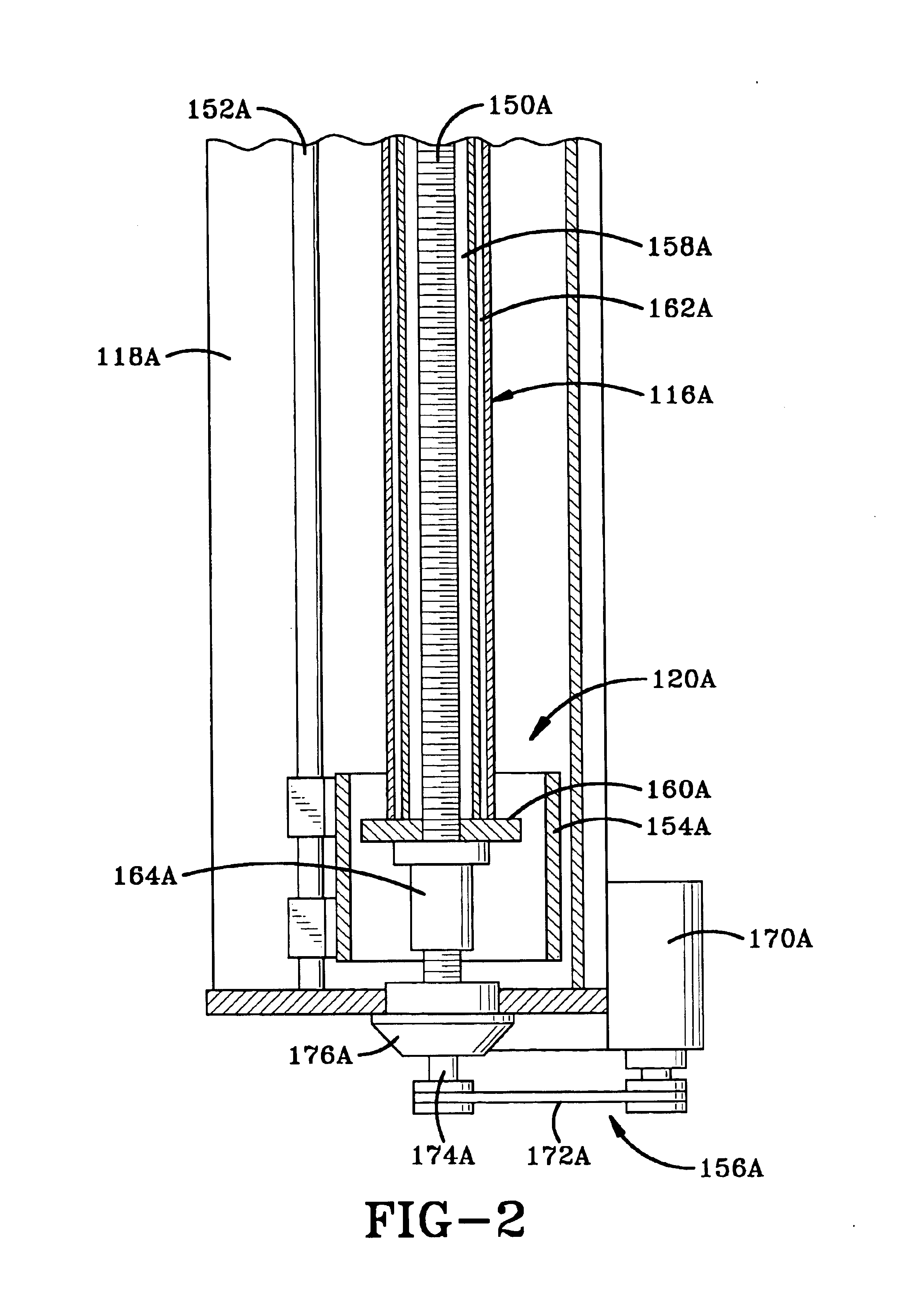Method and apparatus for melting titanium using a combination of plasma torches and direct arc electrodes
a technology of plasma torches and electrodes, which is applied in the direction of furnaces, foundry moulding apparatus, charge manipulation, etc., can solve the problems of low capability, high nitrogen content, and risk of component failur
- Summary
- Abstract
- Description
- Claims
- Application Information
AI Technical Summary
Benefits of technology
Problems solved by technology
Method used
Image
Examples
second embodiment
A second embodiment is shown in FIGS. 15, 15A and 16. This embodiment is substantially identical to the first, embodiment except instead of casting molds 58 as described above the embodiment includes direct molds 258A and 258B. These molds are designed to have the contours of a desired end product. The molds 258 sit directly on top of the cylinders. In addition, the hearth 56 tips to pour the molten material into the molds as is shown in FIG. 15. The hearth tips and fills the mold to the desired fill level, and then the hearth returns to its initial level position.
In the above-described embodiment, the heat sources were plasma torches. One other option for use in the first and second embodiments is direct arc electrodes for heat sources rather than plasma torches. In yet another and preferred embodiment such as is shown in the Figures for the second embodiment, heat sources 54A and 54F are plasma torches, while heat sources 54C and 54D are direct arc electrodes (DAE). In the preferr...
third embodiment
A third embodiment is shown in FIGS. 17-18. This embodiment is substantially identical to the first and second embodiments where casting molds are used as in the first embodiment, both plasma torches and direct arc electrodes are used as in the second embodiment, tilting of the main hearth 56 occurs as in the second embodiment, and refining hearths 300A and 300B and corresponding heat sources 54B and 54E are added and may be either plasma torches or direct arc electrodes although are preferably direct arc electrodes.
In more detail, refining hearths 300A and 300B are added. These hearths may be of a similar construction to the main hearth 56, or alternatively may vary such as is shown where the refining hearths are shallower and have a more rounded interior. In addition, typically the refining hearths only have one overflow 302 as the molten material from the main hearth is poured into the refining hearth from overhead so it only needs to pour out of the opposite end via a well defin...
PUM
| Property | Measurement | Unit |
|---|---|---|
| purity | aaaaa | aaaaa |
| density | aaaaa | aaaaa |
| concentrations | aaaaa | aaaaa |
Abstract
Description
Claims
Application Information
 Login to View More
Login to View More - R&D
- Intellectual Property
- Life Sciences
- Materials
- Tech Scout
- Unparalleled Data Quality
- Higher Quality Content
- 60% Fewer Hallucinations
Browse by: Latest US Patents, China's latest patents, Technical Efficacy Thesaurus, Application Domain, Technology Topic, Popular Technical Reports.
© 2025 PatSnap. All rights reserved.Legal|Privacy policy|Modern Slavery Act Transparency Statement|Sitemap|About US| Contact US: help@patsnap.com



